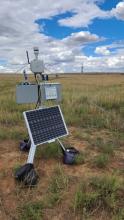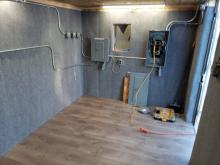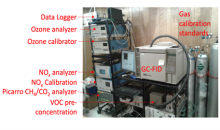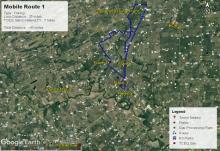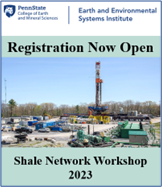Quarterly Update March 2023
HEI Energy's March 2023 Quarterly Research Updates are now available. You will find the latest progress from each of our 5 exposure studies in communities affected by oil and gas development.
Project Updates
Air Quality and Noise Research
Measuring and Modeling Air Pollution and Noise Exposure Near Unconventional Oil and Gas Development in Colorado
Read the full Research Report here
The goal of this study is to develop community exposure profiles in the Colorado North Front Range for chemicals in the air as well as noise over the UOGD lifecycle, from site preparation through production of multi-well pads. This study will assess potential exposure pathways connecting UOGD chemical emissions to nearby communities and use the results to better understand the public health implications. The investigators will apply the following methods to achieve these goals:
- Use a combination of existing air quality data, innovative air quality measurements, and source apportionment models to quantify potential exposures.
- Collect noise measurements from UOGD operations to quantify potential exposures.
- In collaboration with the Hildebrandt Ruiz team, develop the "TRAcking Community Exposures and Releases" (TRACER) model for use in the Denver-Julesburg region to predict chemical emissions from specific UOGD processes. The teams will combine the predicted emissions with an air quality model to estimate concentrations of chemicals in the air.
- Evaluate model performance by comparing air quality monitoring data collected by this and the Franklin team with model predictions in the Denver-Julesburg region.
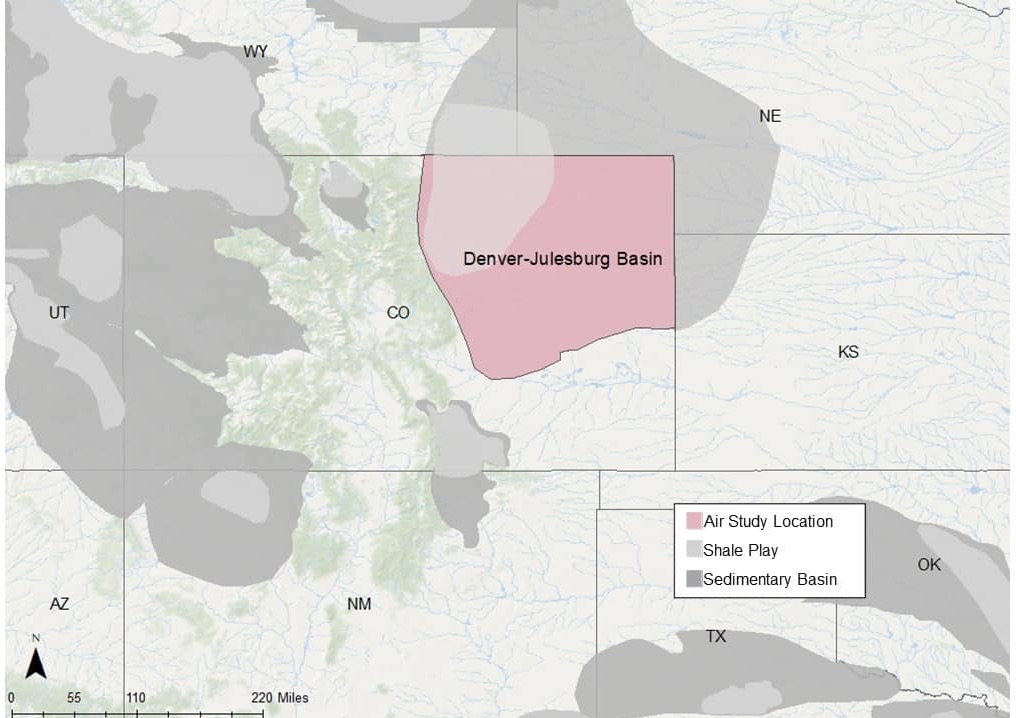
What's Happened
- Tested noise monitoring equipment, which is now ready for field deployment.
- Met with oil and gas operators and service companies to gain insights into details of pre-production activities on well pads, including various drilling and hydraulic fracturing technologies and approaches.
- Secured the cooperation of three oil and gas companies for information on timing of operations and site access.
- Dr. Collett gave an invited keynote presentation on air emissions from UOGD development at the Annual Meeting of the American Meteorological Society in January 2023.
- Worked with collaborators at the University of Texas to develop the TRACER emissions model for pre-production activities.
What's New
- Analyzing data from Fall 2022 on volatile organic compound concentrations detected during drilling operations.
- Deploying air and noise monitoring equipment in March 2023 during hydraulic fracturing.
What's Next
- Obtain information from oil and gas operators on the timing of pre-production operations to help plan for air quality and noise monitoring at a well pad featuring a grid-powered, electrified drill rig and noise monitoring at another location with quieter electric equipment for hydraulic fracturing.
- Continue collaboration with the University of Texas on the development of the TRACER emissions model, specifically to represent emissions during drilling and hydraulic fracturing.
Upcoming Events
- Poster presentation at the HEI Annual Conference, Boston, MA (April 30-May 2).
Assessing Source Contributions to Air Quality and Noise in Unconventional Oil Shale Plays
Read the full Research Report here
The goal of this study is to understand potential community exposure to UOGD-associated chemicals and radioactivity in air as well as noise. The investigators will apply the following methods to achieve their goals:
- Monitor air quality and noise in the Permian region of New Mexico and the Eagle Ford region of Texas to understand how potential exposures vary across the regions and over different time scales.
- Combine existing air monitoring data in the Denver-Julesburg region of Colorado and original data collected in the Permian and Eagle Ford regions with statistical models to distinguish UOGD from other sources of chemicals in the air and noise sources.
- Leverage satellite data to examine the association between natural gas flaring and air quality.
Collaborate with the Collett and Hildebrandt Ruiz teams to evaluate the "TRAcking Community Exposures and Releases" (TRACER) model performance in the Denver-Julesburg and Eagle Ford regions.
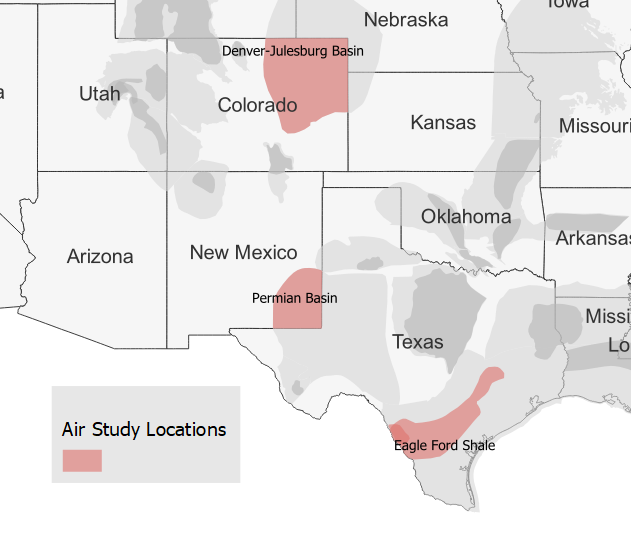
What's Happened
- Secured the cooperation of an oil and gas company for site access and provision of operational data.
- Tested trailer with instruments that measure air quality and noise in preparation for deployment.
- Analyzed data about well locations and flaring of natural gas in the Permian Basin, with specific focus on the New Mexico communities of Carlsbad and Loving.
- Studied historical trends in the levels of nitrogen oxides (NOx) and ozone in outdoor air near a state monitoring location in Carlsbad.
What's New
- Establishing a stationary air quality and noise monitoring location in Loving, NM.
- Engaging with a community organization in Carlsbad, NM.
- Engaging with a science professor in the local Community College (Southeast NM College, SENMC), who will participate in the project by hosting a passive sampler for air monitoring.
- Seeking landowners interested in allowing e passive air quality monitors on their properties.
- Re-running a public service announcement in both English and Spanish on Carlsbad radio stations, to inform the public of our upcoming air quality study and the opportunity to get involved.
What's Next
- Deploy the trailer outfitted with air quality and noise monitoring instruments to Loving, NM.
- Build a website to share information with the community.
- Contact landowners and community members in Carlsbad and Loving, NM for our passive air sampling campaign. They will be contacted in person as possible.
Upcoming Events
- Community Open House in Carlsbad, NM (Spring 2023; date and location to be determined) to engage in a discussion about our research, display our air quality and noise sampling trailer, and recruit community volunteers for passive air quality monitoring.
- Poster presentation at the HEI Annual Conference, Boston, MA (April 30-May 2).
Predictive, Source-oriented Modeling and Measurements to Evaluate Community Exposures to Air Pollutants and Noise from Unconventional Oil and Gas Development
The goal of this study is to develop a broadly applicable model, the "TRAcking Community Exposures and Releases" (TRACER) model. The model will assess potential community exposures to chemicals in the air from UOGD and inform future health studies. The model will then be used to predict the magnitude and frequency of emissions from individual UOGD sources, and when coupled with dispersion modeling, will generate concentrations of chemicals in the air. The investigators will apply the following methods to achieve their goals:
- Collect stationary and mobile air quality and noise measurements in the Eagle Ford, Texas region.
- In collaboration with the Collett team, develop the TRACER model in the Eagle Ford region to generate chemical emissions data from specific UOGD processes. The teams will combine the predicted emissions with air quality models to estimate local and regional concentrations of chemicals in the air.
- Expansion of the TRACER model to the Marcellus region, leveraging data from the separately funded Appalachian Methane Initiative.
- Evaluate model performance by comparing air quality monitoring data with model predictions in the Eagle Ford region.
- Use TRACER model results to assess spatial and temporal variability of potential community exposures to UOGD-associated chemicals and evaluate the effects of different UOGD sources on potential community exposures.
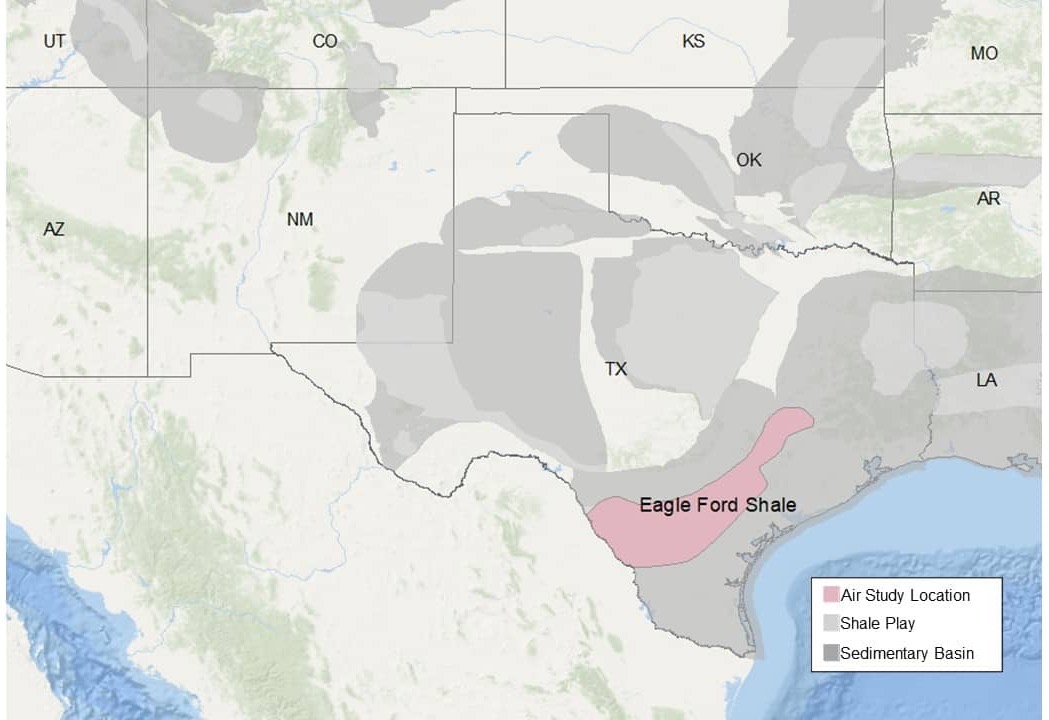
What's Happened
- Continued preparation for monitoring air quality and noise near Karnes City, TX, by setting up instrumentation and identifying mobile monitoring routes. For example, Figure 1 shows a monitoring route that allows us to sample near three active flares and a gas processing plant.
- Continued modeling the effect of nitrogen oxide (NOx) emissions on regional ozone concentrations and examined the type and duration of UOGD processes contributing the most to NOx emissions.
What's New
- Completing final preparations for monitoring air quality and noise near Karnes City, TX.
- Planning stakeholder engagement activities in and near Karnes City, TX.
- Summarizing our NOx modeling results.
- Working on county-level and annual emissions estimations of additional chemicals.
What's Next
- Monitor air quality and noise in and near Karnes City, TX. Monitoring is scheduled for mid-March to mid-May 2023. The measurements will include stationary measurements in Karnes City as well as mobile measurements near Karnes City.
- Continue modeling activities.
Upcoming Events
- Community Open House in Karnes City, TX (Spring 2023; date to be determined).
- Poster presentation at the HEI Annual Conference, Boston, MA (April 30-May 2).
Water Quality Research
Using Geoscientific Analysis and Community Engagement to Analyze Exposures to Potential Groundwater Contamination
Read the full Research Report here
The overall goal of this study is to evaluate potential linkages between unconventional oil and gas development (UOGD) and groundwater contamination in a tri-county region of Pennsylvania with many overlapping potential sources of contamination. The analysis will be informed by focus groups in the region to help identify areas of community concern. The team plans to produce a broadly applicable framework to study the relationship between specific UOGD processes and potential groundwater contamination. The investigators will apply the following methods to achieve their goals:
- Combine an existing data set of chemical measurements in groundwater with machine learning to isolate the influences of natural and anthropogenic processes on groundwater chemistry and to identify chemical signatures of UOGD.
- Evaluate linkages between UOGD and potential water contamination.
- Develop an approach to map locations of potential contamination from UOGD activities for application to future investigations of potential human exposures and health effects associated with UOGD.
- Collected and analyzed well water samples well water in “hot spots” identified through their analysis as likely locations of wastewater spills, in order to evaluate the team’s approach.
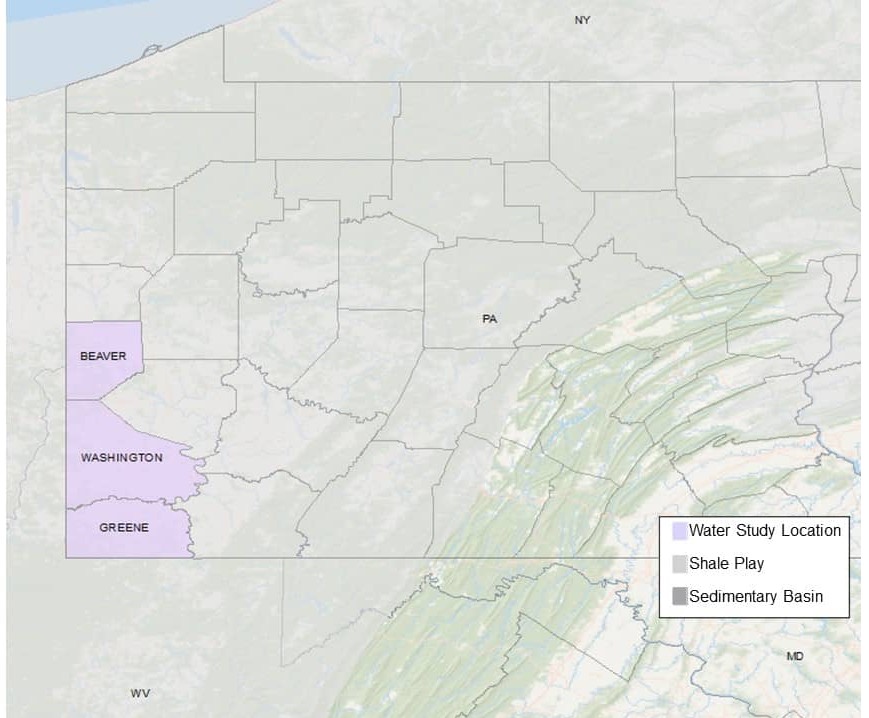
What's Happened
- Dr. Brantley presented a poster at AGU “Water Quality Impacts from Shale-gas Development: from Case Study to Statistical Analysis and from Pennsylvania to the USA.”
- Finalized coding of focus group input and began reviewing community concerns with geoscientists on the research team.
What's New
- Investigating correlations between chemicals detected in groundwater and compliance violations (such as well structural impairments) reported by the regulator.
- Continuing to evaluate potential water contamination “signatures,” or patterns, from various forms of energy development.
What's Next
- Host follow up focus groups with communities in the spring of 2023.
- Finalize manuscripts summarizing the evaluation of potential water contamination “signatures” and community engagement work.
- Begin analysis of human exposures from groundwater contamination.
Upcoming Events
- Presentation at the March 2023 American Association of Geographers Conference: “Something in the Water? Exploring Uncertainty and Knowledge Gaps around Drinking Water Contamination from Unconventional Oil and Gas Drilling Development in Washington County, PA.”
- Poster presentation at the HEI Annual Conference, Boston, MA (April 30-May 2).
- Presentation at the Shale Network Workshop, May 18-19, 2023, at Penn State.
Assessing the Effects of Unconventional Oil and Gas Development on Community Water Sources
The study is complete and now undergoing peer review and an independent quality assurance/quality control audit before HEI Energy releases the research report in the first part of 2026.
The goal of this study is to evaluate whether instances of community water supply contamination in Colorado and New Mexico might be the result of unconventional oil and gas development (UOGD). The study will be useful for understanding the UOGD operational conditions that might present a risk to community water supplies. The investigators will apply the following methods to achieve their goals:
- Analyze existing groundwater and surface water quality data for community water supplies near UOGD and examine correlations between water quality and oil and gas operational data.
- Examine temporal and spatial correlations between UOGD and community water supply contamination to identify possible exposure pathways.
- Model contaminant transport along possible exposure pathways to evaluate the feasibility of the pathways connecting community water supplies with UOGD.
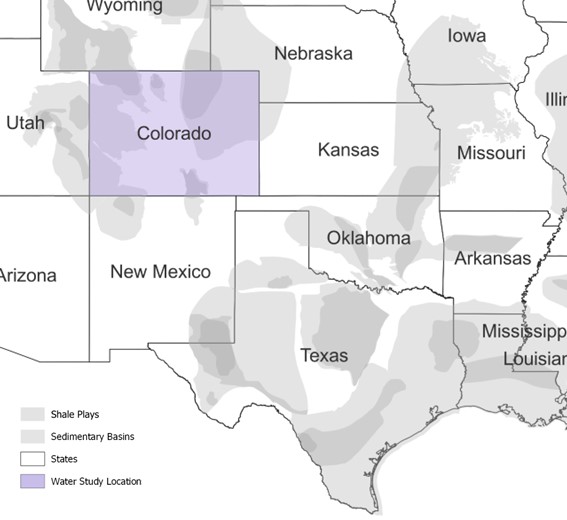
What's Happened
- Identified cases of contamination of drinking water supplies by volatile organic compounds, such as benzene, toluene, ethylbenzene, and xylenes (BTEX). where at least one of these compounds exceeded the Colorado drinking water maximum contaminant level.
- Assessed correlations between BTEX detections and oil and gas operations through review of public information and records, such as violation notices.
- Selected three of these cases for more detailed analysis of groundwater transport of contamination from potential oil and gas operational sources.
What's New
- Collecting data and selecting a model for analysis of contaminant transport.
- Using the three case studies to analyze groundwater transport of contamination to assess the possible extent of contamination and the risk it poses to people who use the water.
What's Next
- Produce (1) an examination of correlations of BTEX occurrence with oil and gas operations, (2) a risk assessment for residents exposed to contamination attributable to oil and gas operations, and (3) a commentary on the adequacy of Colorado’s regulations requiring groundwater monitoring near oil and gas operations.
- Contact state officials in New Mexico to obtain data on water quality and oil and gas operations that are necessary to conduct analyses similar to those conducted using data from Colorado.


